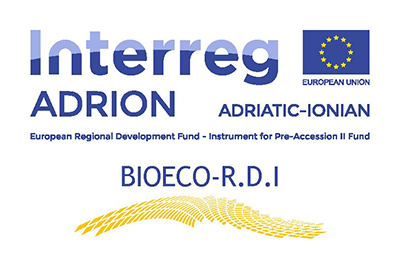
Republic of Serbia
Location: Southeastern Europe, between Macedonia and Hungary
Total: 77,474 sq km
Land: 77,474 sq km
Water: 0 sq km
Natural resources: oil, gas, coal, iron ore, copper, zinc, antimony, chromite, gold, silver, magnesium, pyrite, limestone, marble, salt, arable land
Land use:
agricultural land: 57.9%
arable land: 37.7%
forest: 31.6%
other: 10.5%
ECONOMIC ENVIRONMENT
Serbia has an economic system in transition based on manufacturing and exports. The state has a strong weight in many sectors of the economy but the country is aiming to increase its "market" culture and international integration (since 2000 it has returned to the IMF, the World Bank, the EBRD, in January of 2014 the negotiations for accession to the EU started, with 16 chapters open in December 2018). According to the Global Competitiveness Index 4.0 2018 of the World Economic Forum, Serbia has improved its position in the ranking which measures the global competitiveness of 140 countries, moving from 70th to 65th. The World Bank, on the other hand, moved Serbia back from the 43rd to the 48th position in its Doing Business Ranking 2018. Finally, at the end of 2018, the Fitch and Standard and Poor's agencies confirmed the country's rating from BB. This picture, although attributable to non-univocal measurement criteria and beyond the continuing structural deficiencies (disposals of large state-owned companies, difficulties in strengthening the rule of law) that weigh on longer-term growth prospects, is undoubtedly indicative of a generally positive trend in the Serbian economy. The main macroeconomic data, including low inflation, a limited budget deficit, the increase in the share of national savings in GDP, are indeed satisfactory in 2018 and in line with the government objectives of macroeconomic stability. Pending the consolidated macroeconomic data for 2018 by the Serbian Government, the IMF's positive outlook on the Balkan country should be noted, which showed GDP growth of 4.4% (higher than estimated), a surplus of around 272 million euros and a public debt / GDP ratio of 50%. The figures for 2018 industrial production were also upfront (at the beginning of January 2019) by the Serbian statistical body, up 1.3% compared to 2017. For 2018, inflation should settle at 2% and unemployment fall below at 12%, with real wage growth at around 3.8%. At the end of December 2018, foreign exchange reserves amounted to 12.89 MLD of Euro. As far as foreign trade is concerned in 2018, compared to a year earlier, exports recorded an increase of + 8.1% and imports + 13%. Finally, the positive trend in tourism continues, which has now become a significant source of income for the country. According to data provided by the Serbian statistical body, in November 2018 there was an increase of 15.3% of the total number of tourists compared to November 2017, while the number of overnight stays in the same period saw an increase of 13.3%. Among the "problematic" points, the weight of bureaucracy (which the Government is aiming to simplify with a series of reforms) and the still heavy ballast of some state companies should be mentioned.
SOURCES:
https://www.cia.gov/library/publications/resources/the-world-factbook/
http://www.infomercatiesteri.it/index.php
https://www.istat.it/it/archivio/230644
https://www.focus-economics.com/countries/slovenia
Total: 77,474 sq km
Land: 77,474 sq km
Water: 0 sq km
Natural resources: oil, gas, coal, iron ore, copper, zinc, antimony, chromite, gold, silver, magnesium, pyrite, limestone, marble, salt, arable land
Land use:
agricultural land: 57.9%
arable land: 37.7%
forest: 31.6%
other: 10.5%
ECONOMIC ENVIRONMENT
Serbia has an economic system in transition based on manufacturing and exports. The state has a strong weight in many sectors of the economy but the country is aiming to increase its "market" culture and international integration (since 2000 it has returned to the IMF, the World Bank, the EBRD, in January of 2014 the negotiations for accession to the EU started, with 16 chapters open in December 2018). According to the Global Competitiveness Index 4.0 2018 of the World Economic Forum, Serbia has improved its position in the ranking which measures the global competitiveness of 140 countries, moving from 70th to 65th. The World Bank, on the other hand, moved Serbia back from the 43rd to the 48th position in its Doing Business Ranking 2018. Finally, at the end of 2018, the Fitch and Standard and Poor's agencies confirmed the country's rating from BB. This picture, although attributable to non-univocal measurement criteria and beyond the continuing structural deficiencies (disposals of large state-owned companies, difficulties in strengthening the rule of law) that weigh on longer-term growth prospects, is undoubtedly indicative of a generally positive trend in the Serbian economy. The main macroeconomic data, including low inflation, a limited budget deficit, the increase in the share of national savings in GDP, are indeed satisfactory in 2018 and in line with the government objectives of macroeconomic stability. Pending the consolidated macroeconomic data for 2018 by the Serbian Government, the IMF's positive outlook on the Balkan country should be noted, which showed GDP growth of 4.4% (higher than estimated), a surplus of around 272 million euros and a public debt / GDP ratio of 50%. The figures for 2018 industrial production were also upfront (at the beginning of January 2019) by the Serbian statistical body, up 1.3% compared to 2017. For 2018, inflation should settle at 2% and unemployment fall below at 12%, with real wage growth at around 3.8%. At the end of December 2018, foreign exchange reserves amounted to 12.89 MLD of Euro. As far as foreign trade is concerned in 2018, compared to a year earlier, exports recorded an increase of + 8.1% and imports + 13%. Finally, the positive trend in tourism continues, which has now become a significant source of income for the country. According to data provided by the Serbian statistical body, in November 2018 there was an increase of 15.3% of the total number of tourists compared to November 2017, while the number of overnight stays in the same period saw an increase of 13.3%. Among the "problematic" points, the weight of bureaucracy (which the Government is aiming to simplify with a series of reforms) and the still heavy ballast of some state companies should be mentioned.
SOURCES:
https://www.cia.gov/library/publications/resources/the-world-factbook/
http://www.infomercatiesteri.it/index.php
https://www.istat.it/it/archivio/230644
https://www.focus-economics.com/countries/slovenia
 Go to the Bioeco R.D.I. website
Go to the Bioeco R.D.I. website


